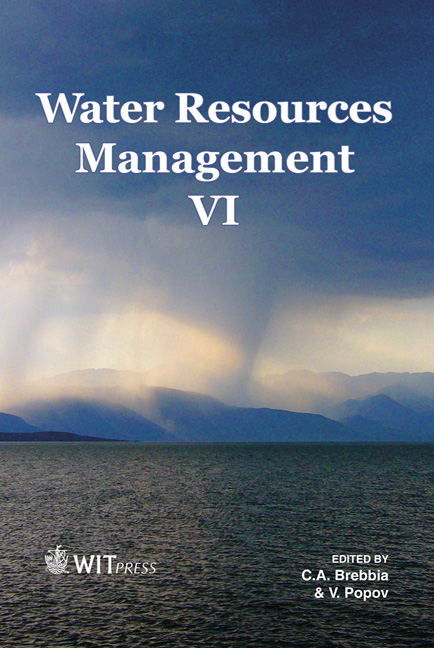Furrow Diking And The Economic Water Use Efficiency Of Irrigated Cotton In The Southeast
Price
Free (open access)
Transaction
Volume
145
Pages
9
Page Range
285 - 293
Published
2011
Size
347 kb
Paper DOI
10.2495/WRM110241
Copyright
WIT Press
Author(s)
R. C. Nuti, C. C. Truman, L. J. Krutz, R. B. Sorensen & M. C. Lamb
Abstract
Cotton (Gossypium hirsutum L.) production in the Southeast United States can be limited by periodic drought. Irrigation and furrow diking tillage may improve economic yield and water use efficiency of cotton. Timing of rainfall may interfere with the efficiency of irrigation. Field studies were conducted during 2001 to 2010 near Shellman, Georgia to examine four irrigation rates based on Irrigator Pro for Cotton consisting of 100, 66, 33, and 0%. The objectives were to determine the value of irrigation and the economic water use efficiency of irrigation among irrigation rates over years. In-season rainfall ranged from 270 to 760 mm and irrigation volume ranged from 110 to 455 mm. Total water applied (rainfall + irrigation) ranged between 560 and 870 mm. In all but 2003, irrigation improved yield by 247-645 kg lint ha-1. Years with average or below average rainfall had incrementally higher yields as irrigation rate increased except for 2007. Water use efficiency for irrigation was highest for the 33% rate in 2001 and 2002 and higher in 2004 and 2007 for the 66% rate. In severe drought years, the 33% rate did not sufficiently relieve drought stress. Irrigation provided profit in all but one year of the study. Although 100% irrigation is not the most efficient irrigation level, it often provides the most economic return. Furrow diking improved yield and water use efficiency in 3 of 6 years tested. Keywords: furrow diking, irrigation, water use efficiency, tillage, cotton, Gossypium hirsutum.
Keywords
furrow diking, irrigation, water use efficiency, tillage, cotton, Gossypium hirsutum





